1941. The war is going well for Hitler. Most Germans, drunk with the success of the victory, continued to support the Nazis enthusiastically. Half of Europe was under German control and many dreamed that peace would come soon, with Europe united under the swastika. But Hitler had other plans. Far from seeking peace, he planned to expand the war by launching an attack on an old enemy, the Soviet Union. And he was eager to complete it with a policy that he had already started, the extermination of the Jews from all over occupied Europe.
The final solution
The Gestapo had been helping with the persecution of the Jews for a while, but piecemeal. They had already come up with an idea to simplify things:give labels to the Jews.
The beginning of 1942 saw Heinrich Müller, head of the Gestapo, on his way to an important conference on the outskirts of Berlin. Reinhard Heydrich, Hitler's right-hand man, had been instructed to start all organizational, practical and material a complete solution to the Jewish question throughout the German zone of influence in Europe. He that implied a genocide and the Gestapo and the police forces they controlled would carry it out. 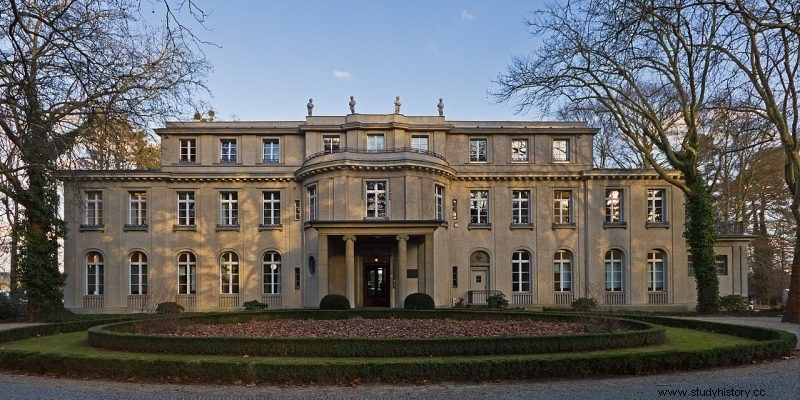
Adolf Eichmann was the specialist on Jews in the Reich security office. Eichmann was an Austrian Nazi who rose through the SS hierarchy in Berlin to become one of the most important figures in the Gestapo during the war. He is often portrayed as the typical faceless bureaucrat who is not attached to anything beyond the performance of his duties. However, Eichmann was not an automaton. He was also an ideological believer who did things not just because he was told to, but because he too was a fervent anti-Semite.
Eichmann took the minutes of the conference, as he would later recall at his trial. Reinhard Heydrich managed during the Wansee conference to get everyone to use expressions like kill, exterminate or eliminate and that their exposures be recorded in the minutes incriminating them. Heydrich then decided what would appear in the minutes and what would not. The Führer had ordered the extermination of the Jews. The plans were finally given the go-ahead as if it were a simple administrative task.
The importance of the conference was that the methods of implementation of the final solution had to be decided. That means there was a large group of second-tier bureaucrats tasked with the job. Heydrich was in charge and Eichmann was his aide-de-camp. The importance of the conference was not the decision to carry out the extermination. That determination had already been made. There only the best way to carry it out was decided.
The start of the extermination
Eichmann sent the conclusions of the conference with the stamps "urgent" and "top secret" to the services of the Gestapo and the Reich police. This was the official order that began the final solution. The apparatus was systematically prepared. Enclosing and transporting millions of people was a complicated business. The Gestapo responded as in the past, making lists of names, lives that were going to end.
The role of the Gestapo was to locate Jews everywhere and send them out of Germany. At the right time they wrote to the Jews of a place, told them to meet at the train station and from there deported them. The Gestapo was in charge of organizing deportations in general. The Gestapo thus liaised with the Reich railways to coordinate train transport to the east.
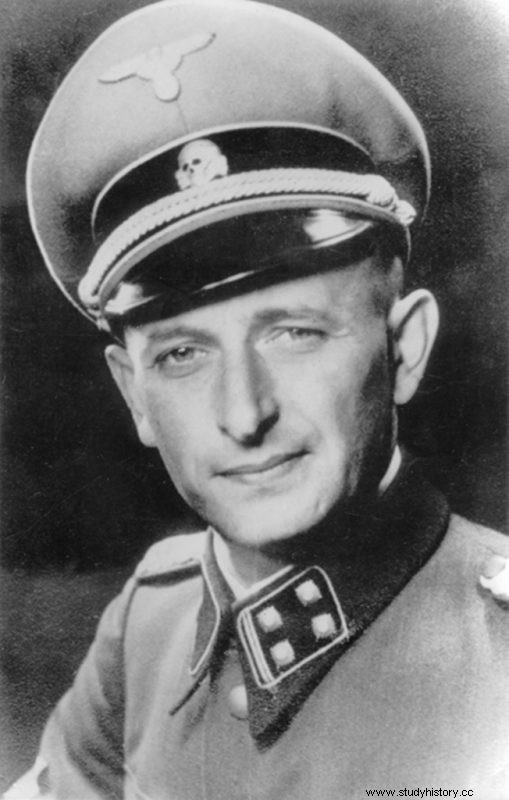
The Gestapo sought all the help they could find. In the occupied territories they offered rewards to the population in exchange for information on the whereabouts of any Jew. Thousands of letters arrived at the different offices of the Gestapo with this information. The letters, however, were not very effective, since it took a long time to read them and by the time it was done, the persecuted people had usually already changed their hiding place.
Throughout the Reich the Gestapo supervised the withdrawal of Jews. Friends and neighbors watched, but didn't see anything. In many cases it was those same neighbors who had denounced the Jews.
By 1942 the Gestapo was organizing deportations throughout the Reich and the occupied territories. The excuse used by the Gestapo for the movement of people was resettlement. The Jews were supposed to be resettled in Eastern Europe for their protection and to separate them from the rest of society. Teresienstadt camp near Prague was even promoted as one such resettlement site.
The transportation system was highly efficient. The trains headed east to the small town of Izbica, near Lublin. This small Polish town was a redistribution ghetto. Jews were brought there, as it was within walking distance of the four main death camps:Treblinka, Madjanek, Sobibor and Belzec. From Izbica, trains sent Jews to these camps as required.
Himmler visited Izbica, where he had a trusted man in charge, Kurt Engels. Engels began his career as a policeman in Cologne. In 1940 he arrived in Izbica as head of the Gestapolocal. He was a brutal and sadistic man who, for entertainment, rode his motorcycle around town looking for Jews to shoot.
On the afternoon of April 28, 1942, Engels had to receive a new train of Jews from Germany. However, Izbica was already full and a problem with transportation made it impossible to immediately divert the train to the nearby extermination camps. Engels decided to remove the people from the train by means of a mass shooting in which he personally participated.
Working together, the Gestapo and the police scoured all of Nazi Germany-controlled Europe to send more shipments to Izbica. In the following two years, almost two million people were transported to the extermination camps by that route. It could not have been done without the dedicated work of the Gestapo. But soon after, he would receive a blow that would shake the security services to their core.
The Athropoid operation
In May 1942 Reinhard Heydrich, head of the SD was rewarded for his ruthless loyalty to Hitler and sent to Prague as Reich Protector, or put another way, as supreme chief. Glory suited his vanity and he had a simple solution for the stubborn Czech resistance he encountered in his new position. He just let go of the Gestapo leash.
Hundreds of people were arrested and whenever Heydrich felt like it, summary executions were carried out in the streets like a public butchery. The Gestapo became overconfident. But the offensive had the opposite effect. Resistance stiffened.
Heydrich went to his office in Prague Castle in a convertible and with his personal pennant. On May 27, 1942, around 10:45 a.m., several Czech resistance activists threw a bomb into the car, but Heydrich was not killed instantly. A passerby called an ambulance, although Heydrich died in hospital.
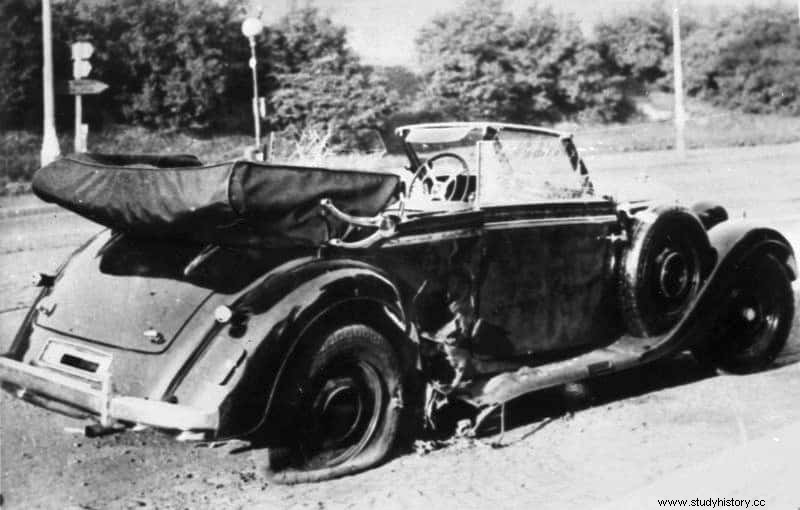
The Gestapo had once again been humiliated in the most public way possible. Heydrich's death reverberated throughout the Reich. The leaders of Nazi Germany felt this loss very much. The head of the Gestapo, Heinrich Müller, again had to personally take charge of the matter. The intelligence ruling was dealt with without delay.
Despite the hard police work of the Gestapo, due to lack of specific evidence, a saturation technique was chosen. 13,000 Czechs were arrested in the following days and 600 were executed. In the town of Lidice, the entire population, 320 men, women and children, was executed. In Prague, 120 members of the Czech resistance were surrounded in a church, where they were besieged. Müller gave the order to take the church by storm, but given the initial failure, it was decided to burn it down with the resisters inside.
Participation as executors
While Hitler was burying Heydrich in Berlin, the Gestapo and the police involved in Operation Reinhard, the extermination of Europe's Jews, were sent to participate in the massacres. The Gestapo took on a new, more active role.
rebates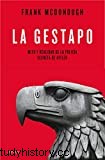 The Gestapo:Myth and Reality of Hitler's Secret Police (Critical Memory) McDonough, Frank (Author) 21 €.75
The Gestapo:Myth and Reality of Hitler's Secret Police (Critical Memory) McDonough, Frank (Author) 21 €.75 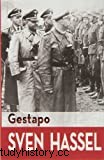 Gestapo Hassel, Sven (Author) 9.95 EUR
Gestapo Hassel, Sven (Author) 9.95 EUR 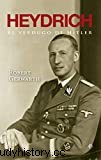 Heydrich (20th century history) Gerwarth, Robert (Author) 9.02 EUR
Heydrich (20th century history) Gerwarth, Robert (Author) 9.02 EUR  Operation Anthropoid [DVD] Jamie Dornan, Cillian Murphy, Toby Jones (Actors); Sean Ellis (Director) €14.00
Operation Anthropoid [DVD] Jamie Dornan, Cillian Murphy, Toby Jones (Actors); Sean Ellis (Director) €14.00 In November 1943, Operation Harvest Festival was launched throughout the East. Until the Czech massacres of the previous year, the Gestapono had carried out systematic murders. They had simply handed their victims over to others to finish the job. But now, in the context of this new operation, they have settled into their new role.
The Gestapo murdered 43,000 Jews in Lublin, Poland. Gestapo units had become death squads. Police officers described their new duties in letters and diaries. The war brought a change to a tightly controlled and clinically organized Gestapo. The brutality of the body only grew during the following years.
Last updated on 06-09-2022 / Affiliate Links / Affiliate API Images
